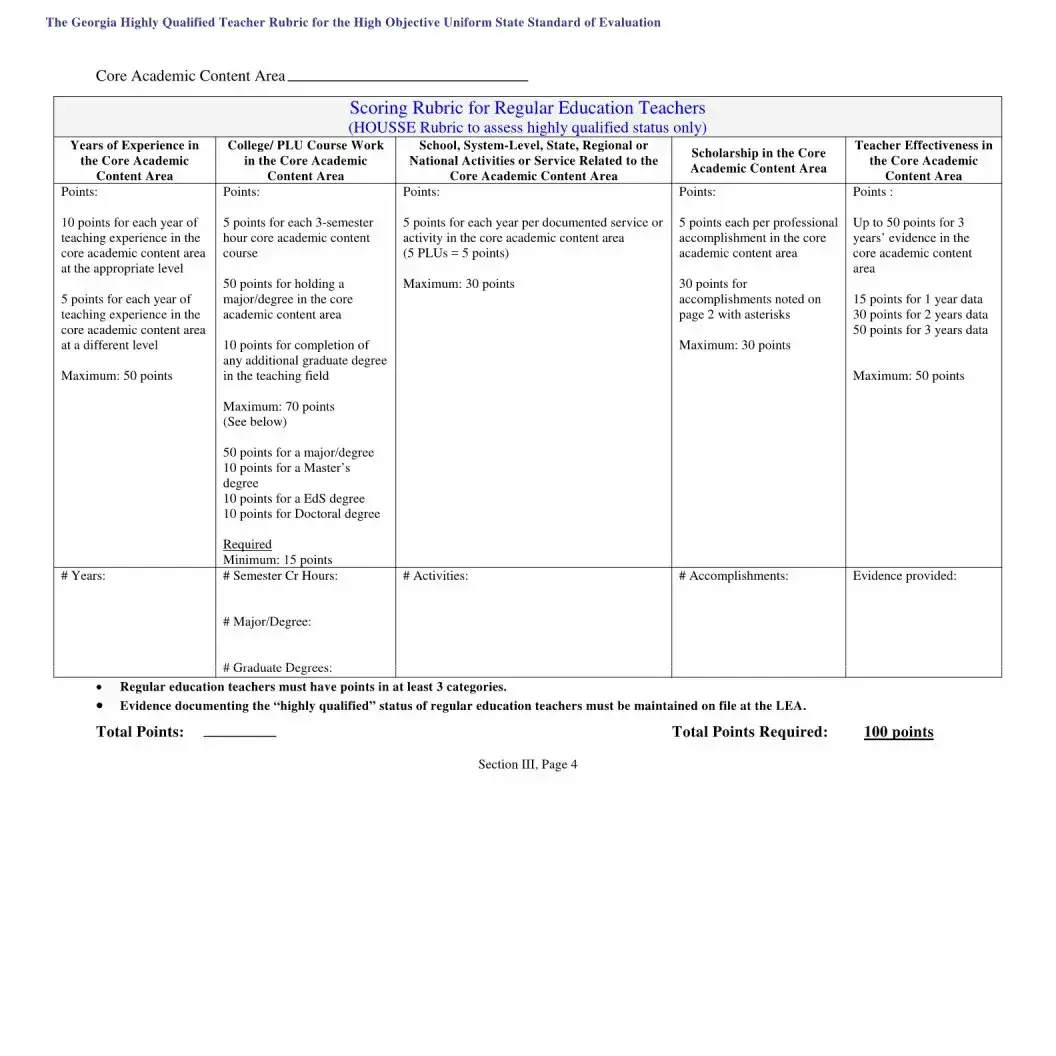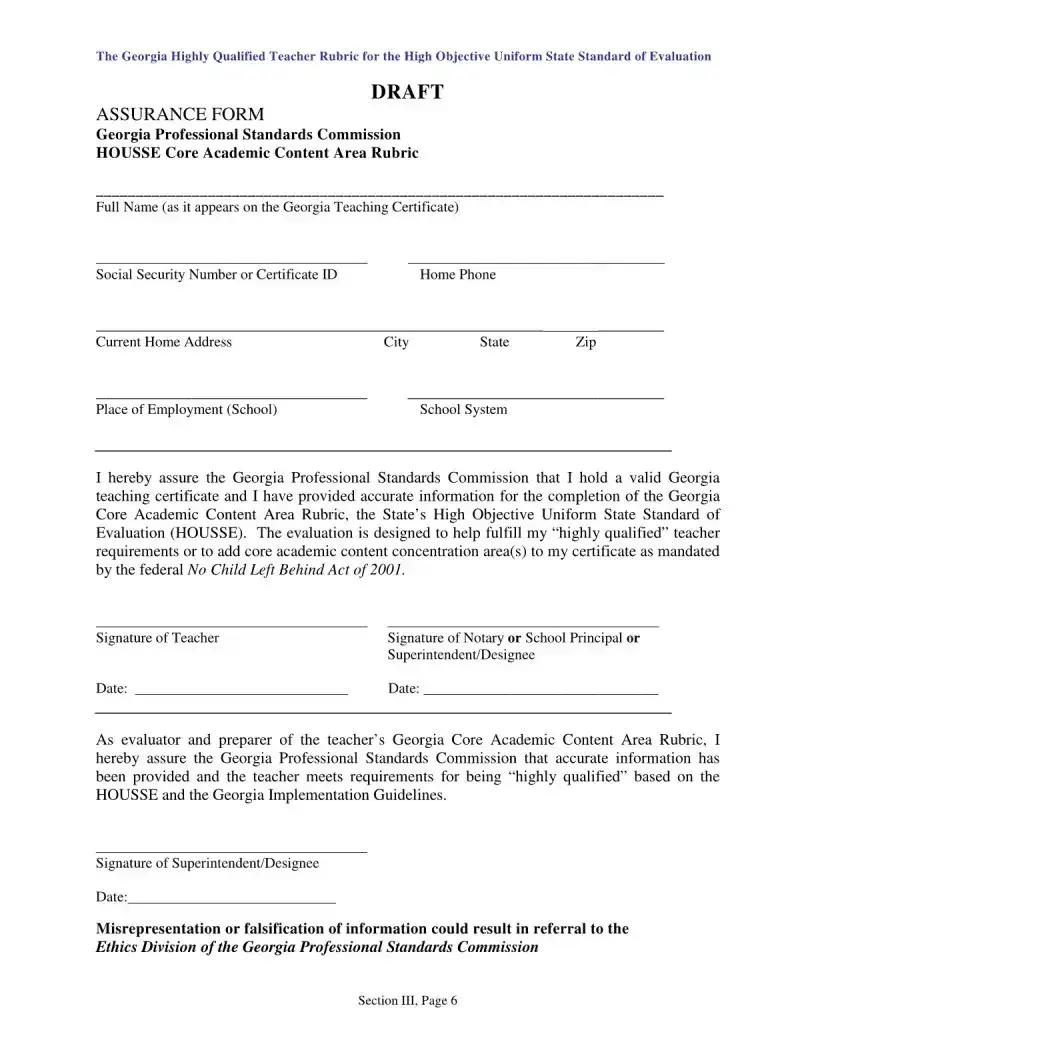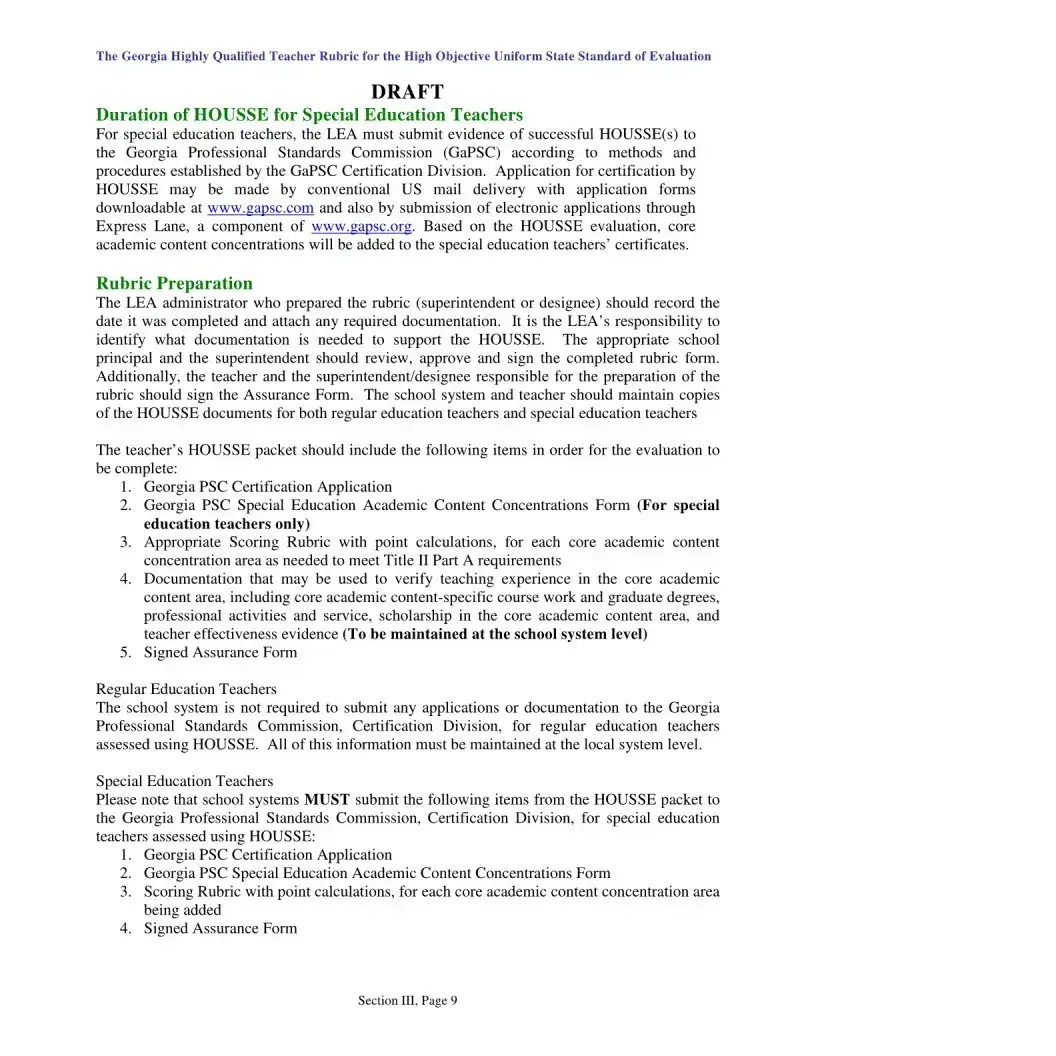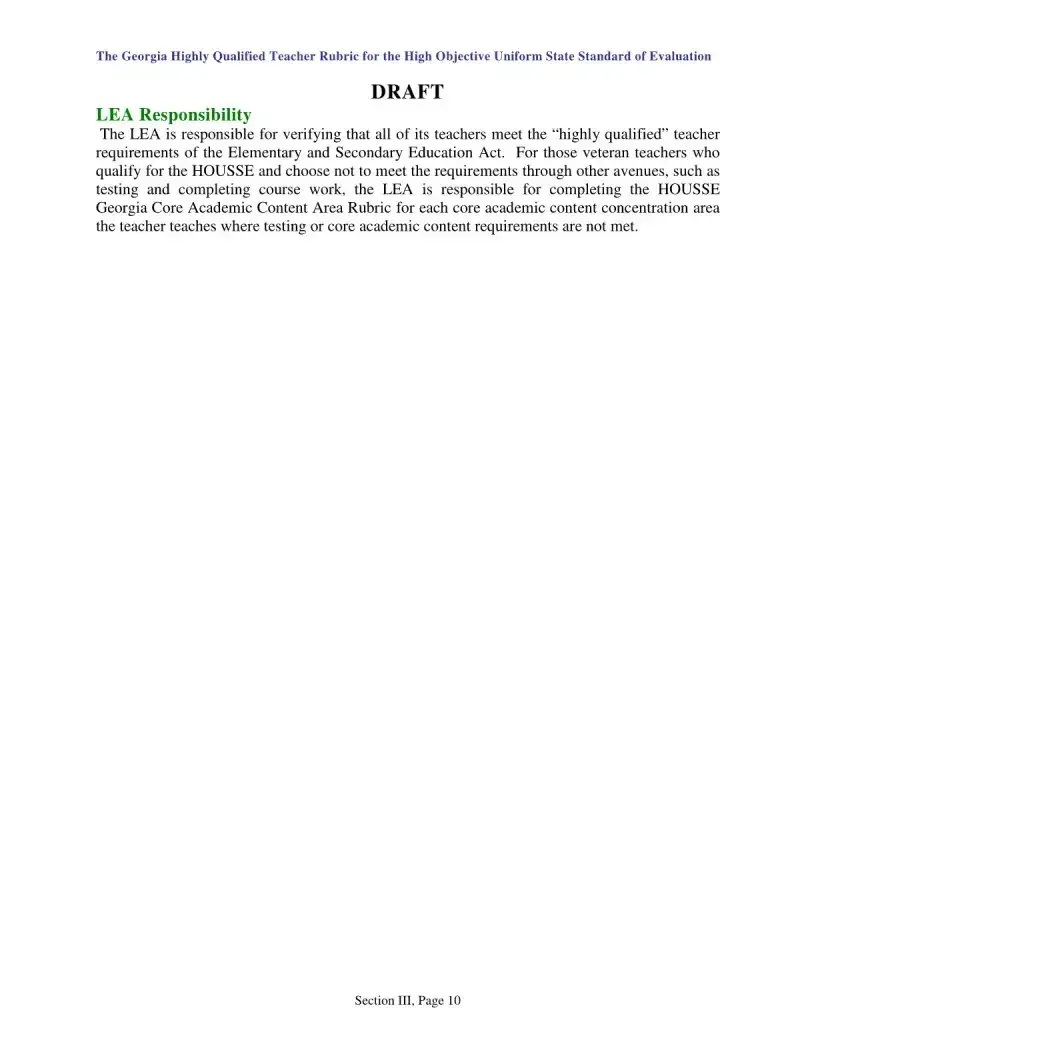-
What is the Housse Rubric Georgia form?
The Housse Rubric Georgia form is a standardized assessment tool designed to evaluate the effectiveness and quality of teaching practices within the state of Georgia. It allows administrators and other educational stakeholders to assess teaching performance based on specific criteria and standards. This tool aims to improve instructional quality by identifying areas of strength and opportunities for professional development.
-
Who is required to use the Housse Rubric Georgia form?
The Housse Rubric Georgia form is primarily used by public school districts in Georgia. It is intended for evaluators, such as principals or department heads, to assess the performance of classroom teachers. While its usage is more common in public schools, charter schools and private educational institutions may also adopt it for evaluating teaching effectiveness.
-
What are the key components of the Housse Rubric Georgia form?
The Housse Rubric Georgia form includes various components aimed at evaluating different aspects of teaching. These typically cover areas such as instructional planning, classroom management, instruction execution, professional responsibilities, and student assessment. Each area consists of specific indicators that describe expected teacher performance levels.
-
How is the Housse Rubric Georgia form scored?
Scoring on the Housse Rubric Georgia form generally involves a scaled approach where each performance indicator is assessed against a predefined scale. This scale may range from unsatisfactory to exemplary performance. Scores are assigned based on observations and evidence of teaching practices. The overall score is typically a composite of these individual scores, providing a holistic view of a teacher's effectiveness.
-
Can the Housse Rubric Georgia form be used for purposes other than evaluation?
Yes, beyond its primary function as an evaluative tool, the Housse Rubric Georgia form can be utilized for a variety of developmental purposes. Teachers can use it as a self-assessment tool to reflect on their practice and identify areas for professional growth. It can also guide professional development activities and inform discussions between teachers and mentors concerning instructional practices.
-
What happens if a teacher receives a low score on the Housse Rubric Georgia form?
If a teacher receives a low score on the Housse Rubric Georgia form, it typically triggers a series of supportive responses rather than punitive measures. The focus is on identifying the specific areas where improvement is needed and providing the teacher with the necessary resources, training, and mentoring to enhance their teaching practice. This may include personalized professional development plans, additional classroom observations for feedback, or pairing with a mentor teacher.
-
Is training available for evaluators using the Housse Rubric Georgia form?
Yes, training is available and often required for evaluators who will use the Housse Rubric Georgia form. This training is designed to ensure that evaluators are familiar with the rubric's components, understand how to apply the scoring system accurately, and can provide constructive feedback to teachers. It helps to enhance the reliability and validity of the evaluation process.
-
How often is the Housse Rubric Georgia form updated?
The Housse Rubric Georgia form is periodically reviewed and updated to reflect current educational standards, research findings, and feedback from users. This ensures that the rubric remains relevant and effectively supports the ongoing improvement of teaching and learning. Updates may involve revisions to performance indicators, scoring criteria, or the addition of new components to address emerging educational priorities.
-
Where can one find the latest version of the Housse Rubric Georgia form?
The latest version of the Housse Rubric Georgia form can typically be found on the official website of the Georgia Department of Education or through local school district websites. These platforms provide access to the current rubric, along with related resources and documentation to support its implementation. Educators and evaluators are encouraged to ensure they are using the most recent version for their evaluations.
-
Can the Housse Rubric Georgia form be adapted for use in other states or educational contexts?
While the Housse Rubric Georgia form is specifically designed to align with Georgia's educational standards and priorities, other states or educational institutions may adopt or adapt it to fit their own evaluation needs. However, it's crucial to tailor the rubric to reflect local standards and teaching expectations. Such adaptations should be undertaken with careful consideration to maintain the integrity of the evaluation process and ensure it meets the educational goals of the adopting body.









